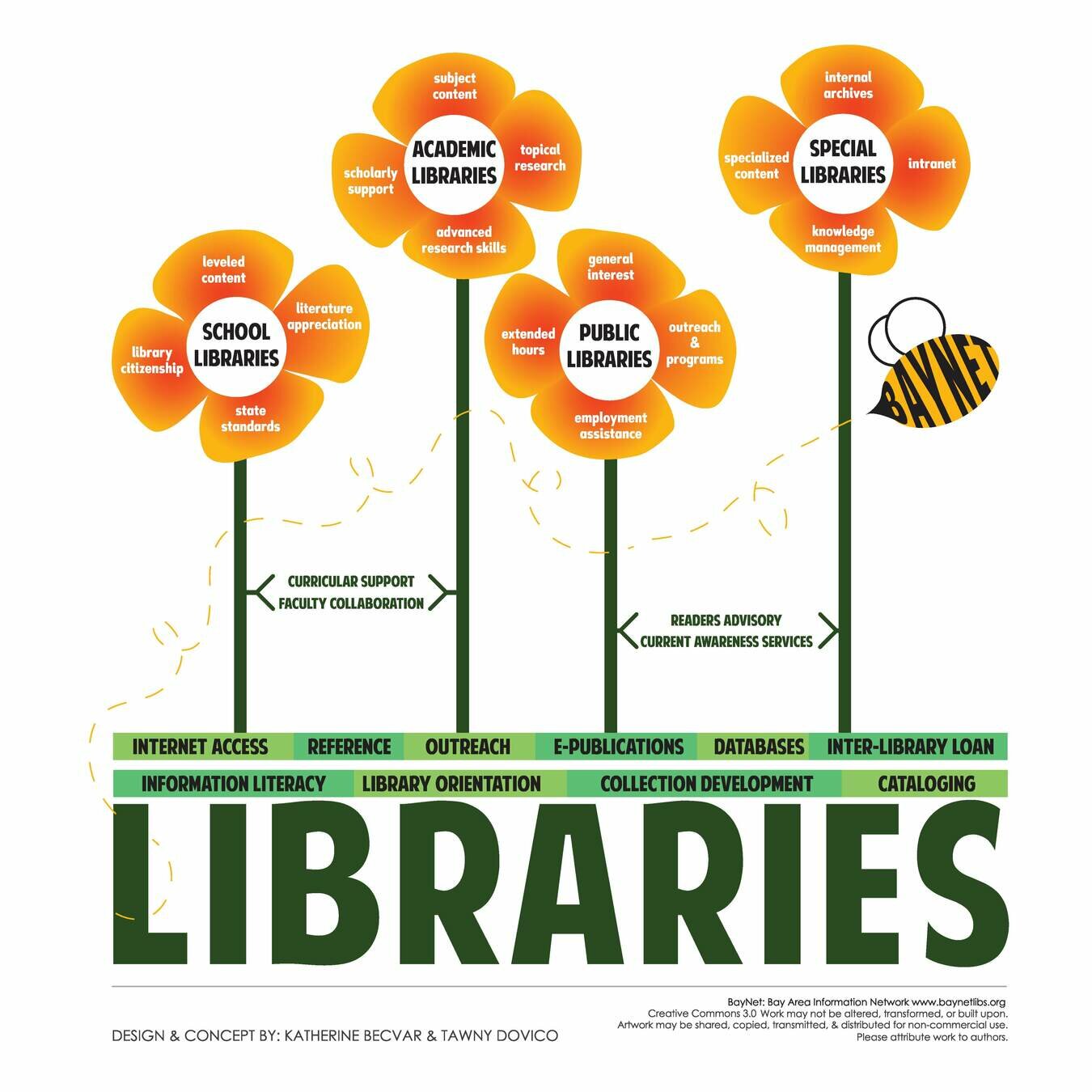Outreach and
Research & Instruction
in libraries
Abigail Weil (she/her) -- Research & Instruction Outreach Librarian
Simon Elichko (they/them) -- Social Sciences & Data Librarian
Agenda
Introductions
Library types
What's R&I librarianship?
Break
Libraries Outreach
Library Types
Image credit: BayNet (Katherine Becvar, Tawny Dovico)
Day in the life of an R&I librarian
- Some of our day-to-day activities
- Thinking (and talking) about service & the communities we work with - colleagues, patrons, constituents, other terms?
- Advocating for students and faculty
bibliographer
subject librarian
reference librarian
instruction librarian
research librarian
more subject-specific and collection-focused
more general and interaction-focused
information literacy
librarian
research + instruction librarian
two strands of librarianship
job titles ⤴
What R&I librarianship
looks like in practice:
*at a liberal arts college
- collection development and management
- reference (answering questions, holding consultations)
- subject liaison duties (e.g. teaching class sessions, facilitating digital scholarship projects)
- student programs & jobs
- committee work
What about at larger universities?
and public libraries?
Examples from
ALA Joblist
What do librarians teach?
Information literacy is the set of integrated abilities encompassing the reflective discovery of information, the understanding of how
information is produced and valued, and the use of information in creating new knowledge and participating ethically in communities of learning."
- Association of College and Research Libraries Framework for Information Literacy in Higher Education (2016)
Citizenship in a modern democracy involves more than knowledge of how to access vital information. It also involves a capacity to recognize propaganda, distortion, and other misuses and abuses of information. ...Information literacy provides insight into the manifold ways in which people can all be deceived and misled.”
Final report, American Library Association Presidential Committee on Information Literacy (1989)
Both educators and librarians must help students see how networked systems affect how they read, and how they come to know things. Ultimately, students must learn how to read these systems — the architectures, infrastructures, and fundamental belief systems — so they can put what they read in context and determine whether or not it’s trustworthy."
Allison Head, Reading in the Age of Distrust. Project Information Literacy. (2021)
Some things students report learning
about from librarians:
- Selecting and recommending sources
- Searching the library catalog and databases
- Identifying search terms
- Helping to understand the assignment or task
- Determining concept areas; determining what to include in paper; developing and clarifying research topic
- Developing a research strategy
- Teaching how to use data and information and determine if it’s credible
- Using the library facility and services
- Reducing stress and providing encouragement and other affective benefits
break
Libraries Outreach
Concepts, questions, and creativity

What brings people
into the library...

or keeps them out?
Think about a library you love—it can be the Swarthmore library, your high school library, a public library you love.
-
What are your favorite things about the library? It can be services, specific resources, a space, a program, a philosophy or even a feeling.
-
How would you tell a friend about it?
-
How would you share the information with a peer—a classmate, a fellow library enthusiast?
-
How would you help someone who has never been in the library learn about it?
What might be barriers for someone
to use a library, and why?
- Accessibility
- Intimidation
- Lack of information
- What else?
How do you welcome people into the library
and support them using it?
-
Targeted outreach (coming to the community to connect them with the resource, like when a librarian visits a class)
-
Coalition-building (campus partnerships, working with student groups)
-
Pop-up programming, in the libraries or other high-traffic spaces
-
Advertising through established channels like newsletters
-
Social media
-
What else?
Hands-on activity:
Design an outreach strategy for a potential project
-
Use one of our suggestions or propose your own idea
-
Some guiding questions:
-
What kind of library would this be at?
-
Who is the target audience?
-
Is there a built-in audience, is there an untapped audience?
-
Abigail Weil
Outreach Librarian
aweil1@swarthmore.edu
Simon Elichko
Social Sciences & Data Librarian
selichk1@swarthmore.edu
